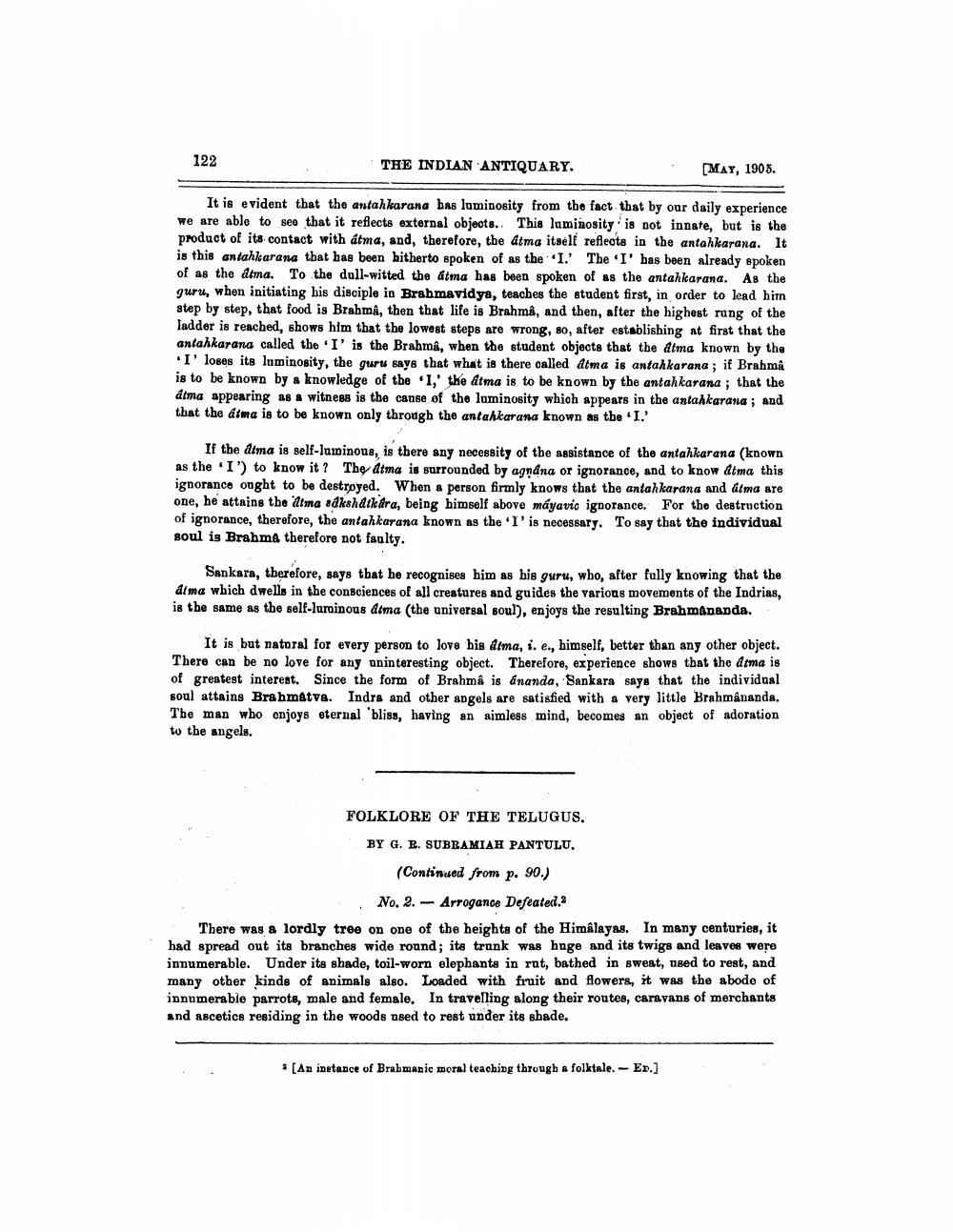________________
122
THE INDIAN ANTIQUARY.
[MAY, 1905.
It is evident that the antahkarana has luminosity from the fact that by our daily experience we are able to see that it reflects external objects. This luminosity is not innate, but is the product of its contact with átma, and, therefore, the atma itself reflects in the antahkarana.lt is this an tahkarana that has been hitherto spoken of as the 1.' The 'I' has been already spoken of as the atma. To the doll-witted the atma has been spoken of as the antahkarana. As the guru, when initiating his disciple in Brahmavidya, teaches the student first, in order to lead him step by step, that food is Brahma, then that life is Brahma, and then, after the highest rang of the ladder is reached, shows him that the lowest steps are wrong, so, after establishing at first that the antahkarana called the 'I' is the Brahmat, when the student objects that the atma known by the
Il loses its luminosity, the guru says that what is there called atma is antahkarana; if Brahma is to be known by a knowledge of the 1,' the atma is to be known by the antahkarana ; that the atma appearing as a witness is the cause of the luminosity which appears in the antahkarana ; and that the atma is to be known only through the antahkarana known as the I.
If the dma is self-luminous, is there any necessity of the assistance of the antahkarana (known as the 'I') to know it? The atma is surrounded by agndna or ignorance, and to know atma this ignorance ought to be destroyed. When a person firmly knows that the antahkarana and atma are one, he attains the 'Atma sakshatkara, being himself above máyavic ignorance. For the destruction of ignorance, therefore, the antahkarana known as the l'is necessary. To say that the individual soul is Brahma therefore not faulty.
Sankara, therefore, says that he recognises him as his guru, who, after fully knowing that the alma which dwells in the consciences of all creatures and guides the various movements of the Indrias, is the same as the self-lurainous dtma (the universal soul), enjoys the resulting Brahmananda.
It is but natural for every person to love his atma, i. e., bimself, better than any other object. There can be no love for any uninteresting object. Therefore, experience shows that the doma is of greatest interest. Since the form of Brahma is ananda, Sankara says that the individual soul attains Brahmatva. Indrs and other angels are satisfied with a very little Brahmananda. The man who onjoys eternal 'bliss, having an aimless mind, becomes an object of adoration to the angels.
FOLKLORE OF THE TELUGUS.
BY G. E. SUBRAMIAH PANTULU.
(Continued from p. 90.)
• No. 2.- Arrogance Defeated. There was a lordly tree on one of the heights of the Himalayas. In many centuries, it had spread out its branches wide round; its trunk was huge and its twigs and leaves were innumerable. Under its shade, toil-worn elephants in rat, bathed in sweat, need to rest, and many other kinds of animals also. Loaded with fruit and flowers, it was the abode of innumerable parrote, male and female. In travelling along their routes, caravans of merchants and ascetics residing in the woods used to rest under its shade.
• (An inetance of Brabmanic moral teaching through a folktale. - En.]




